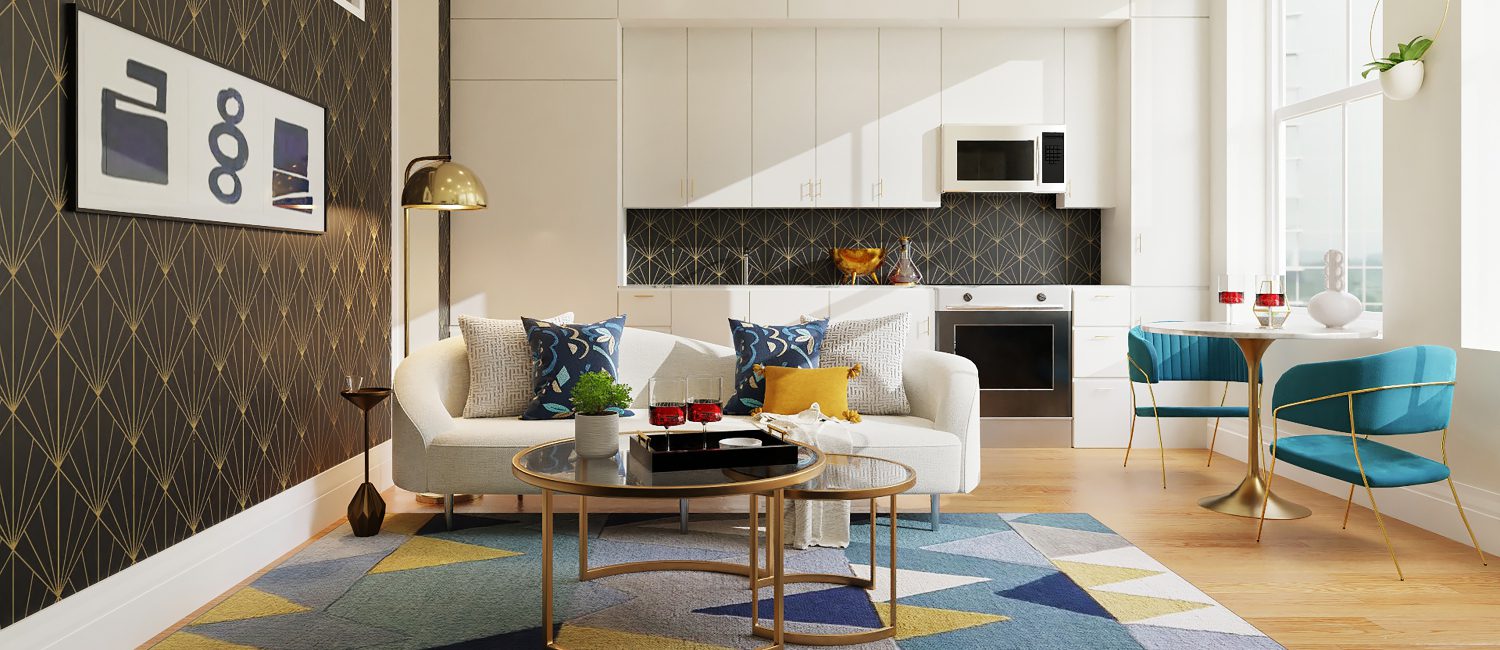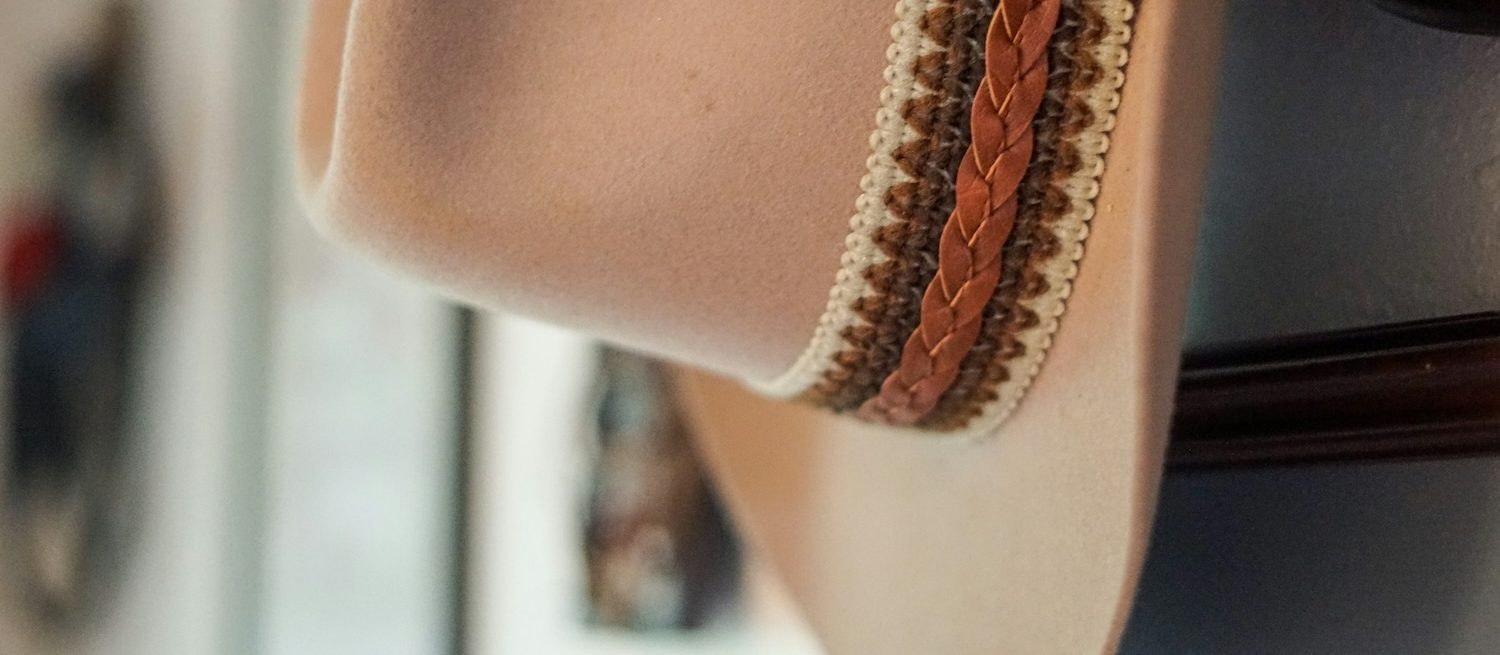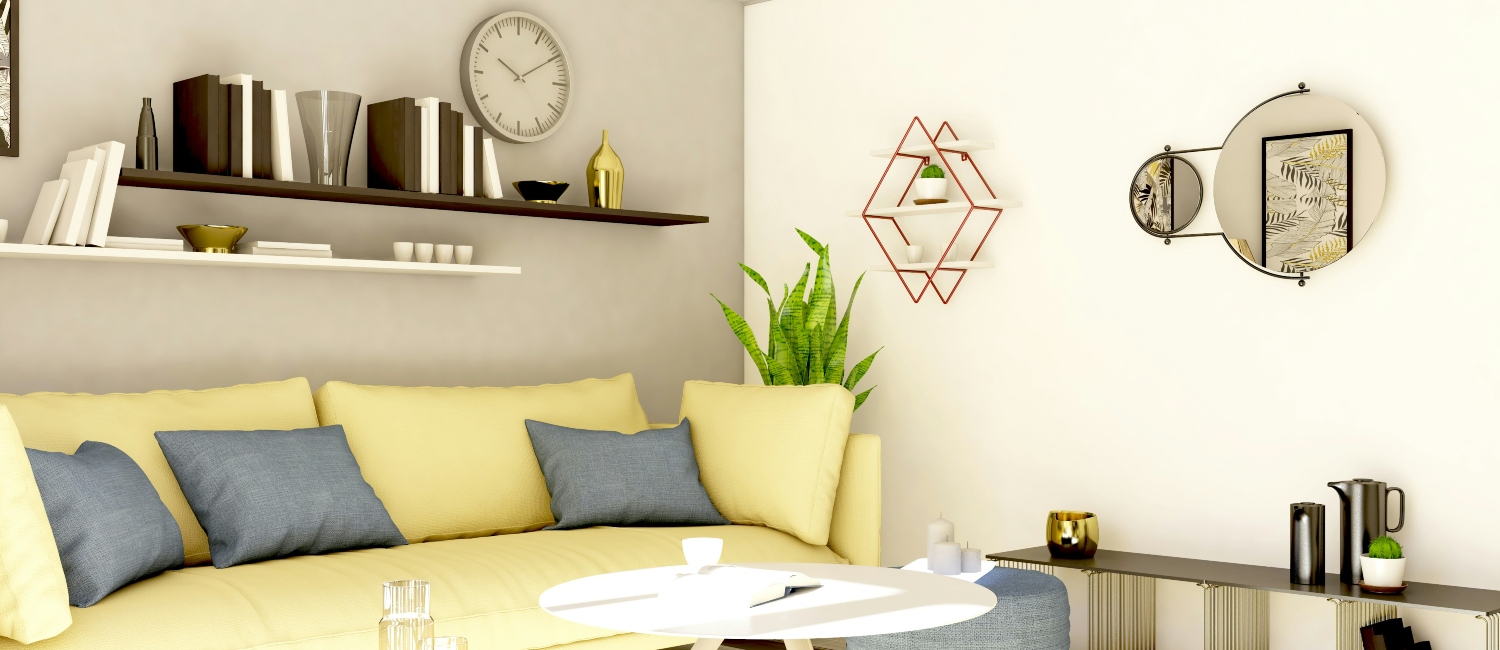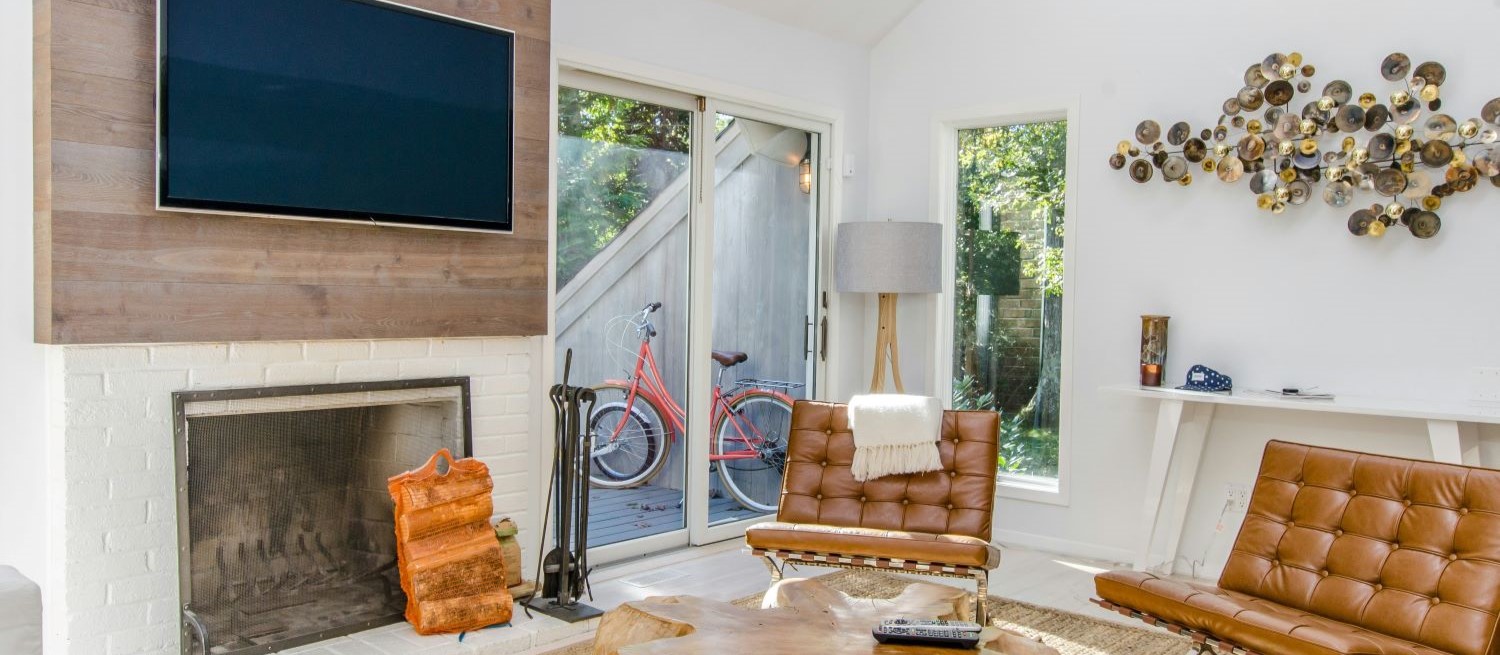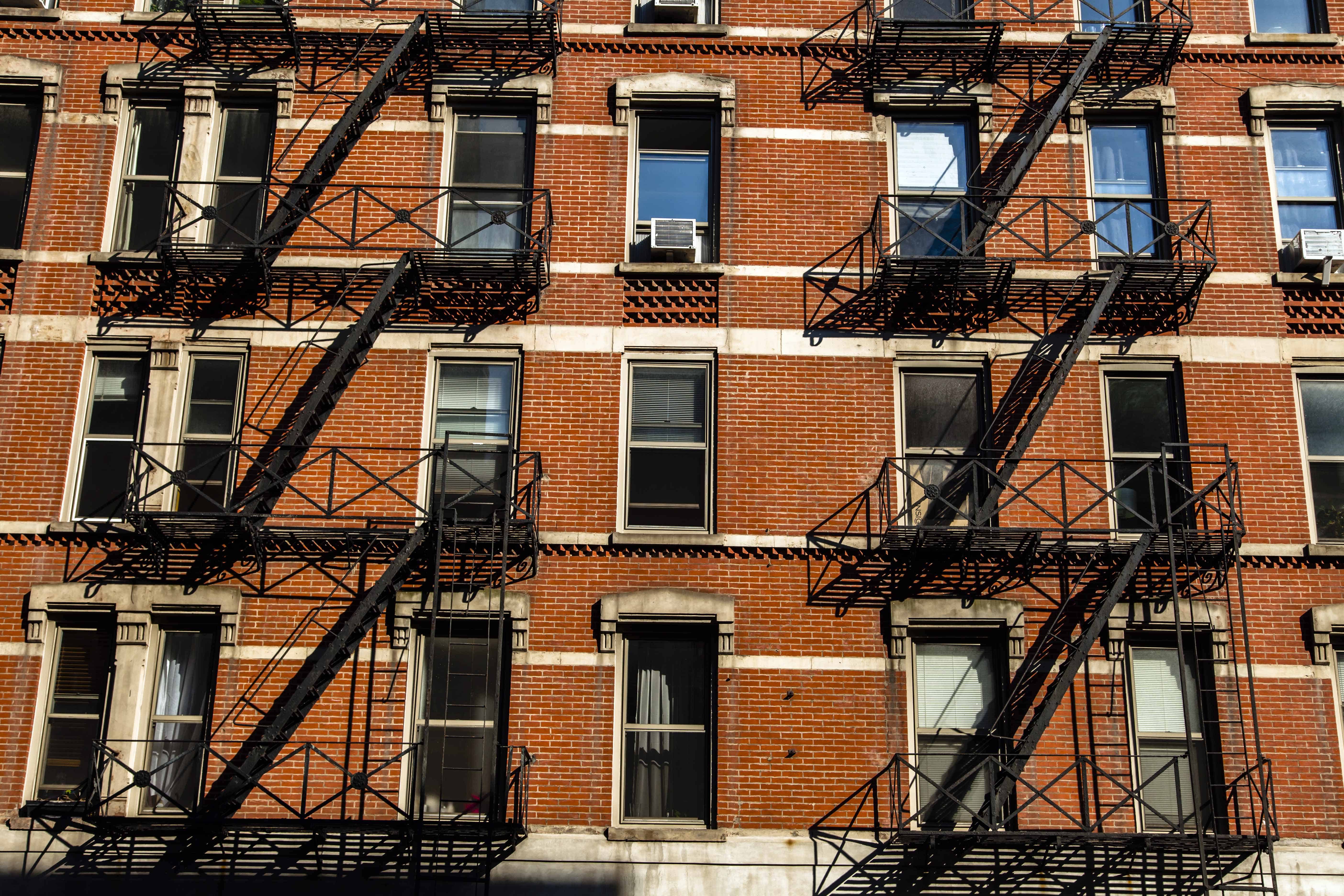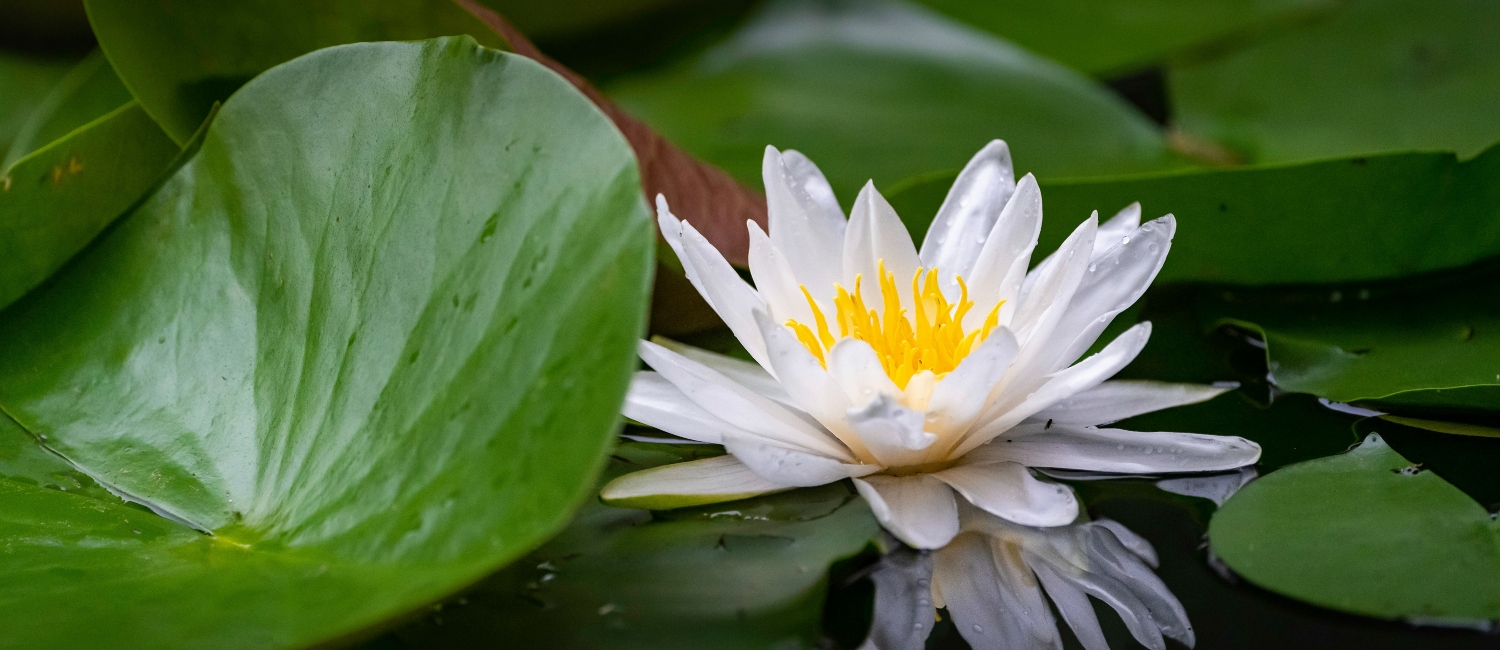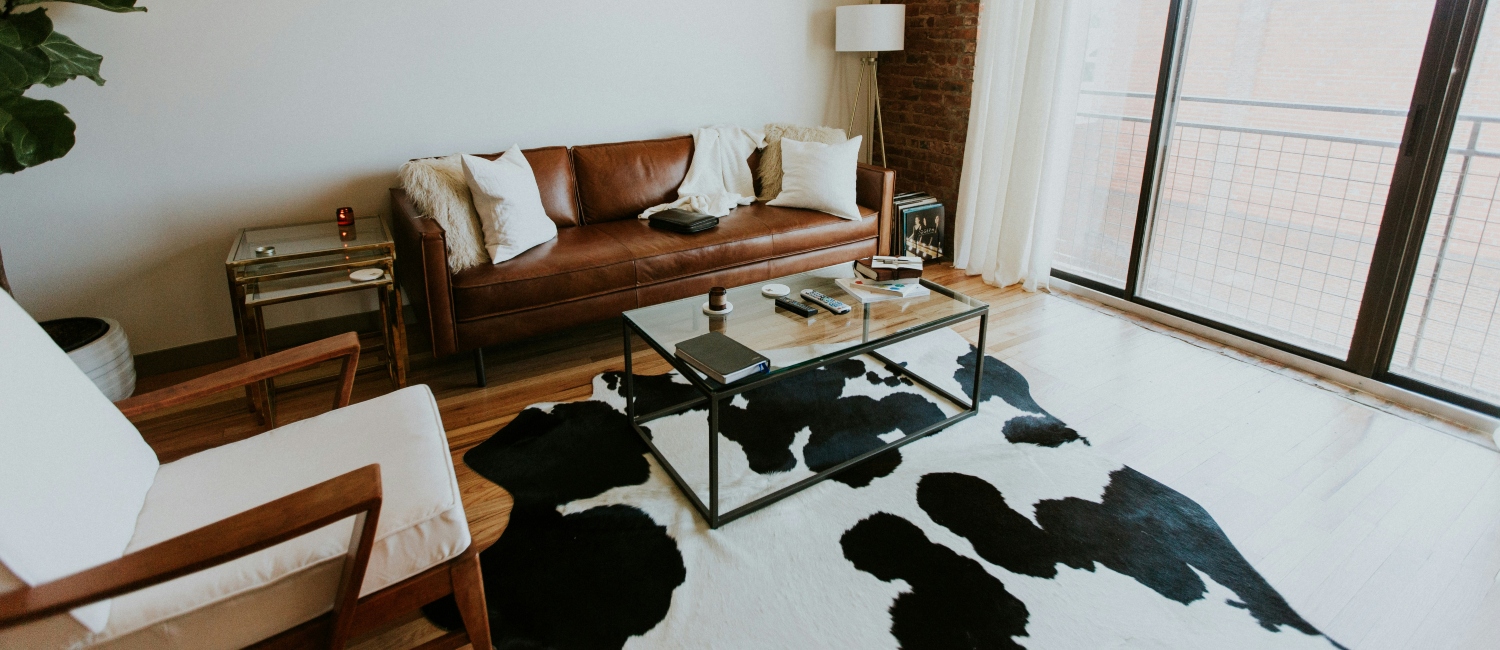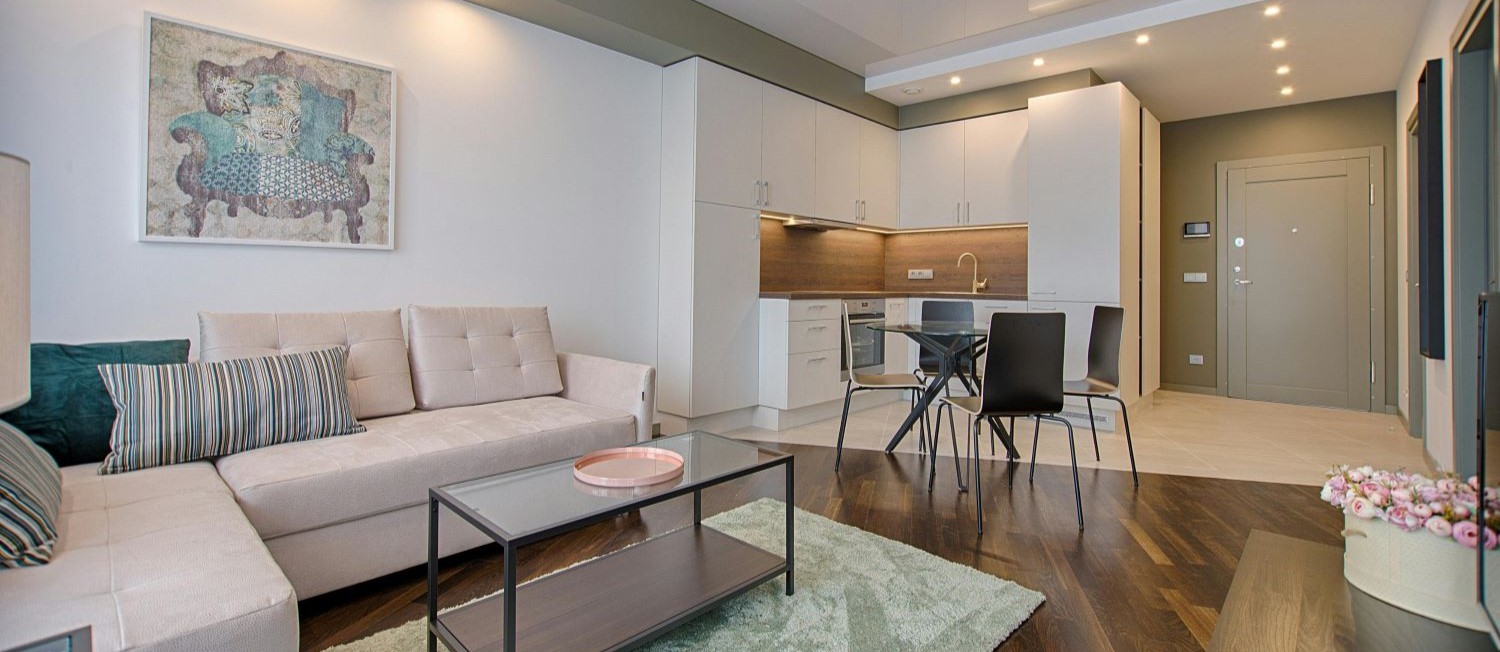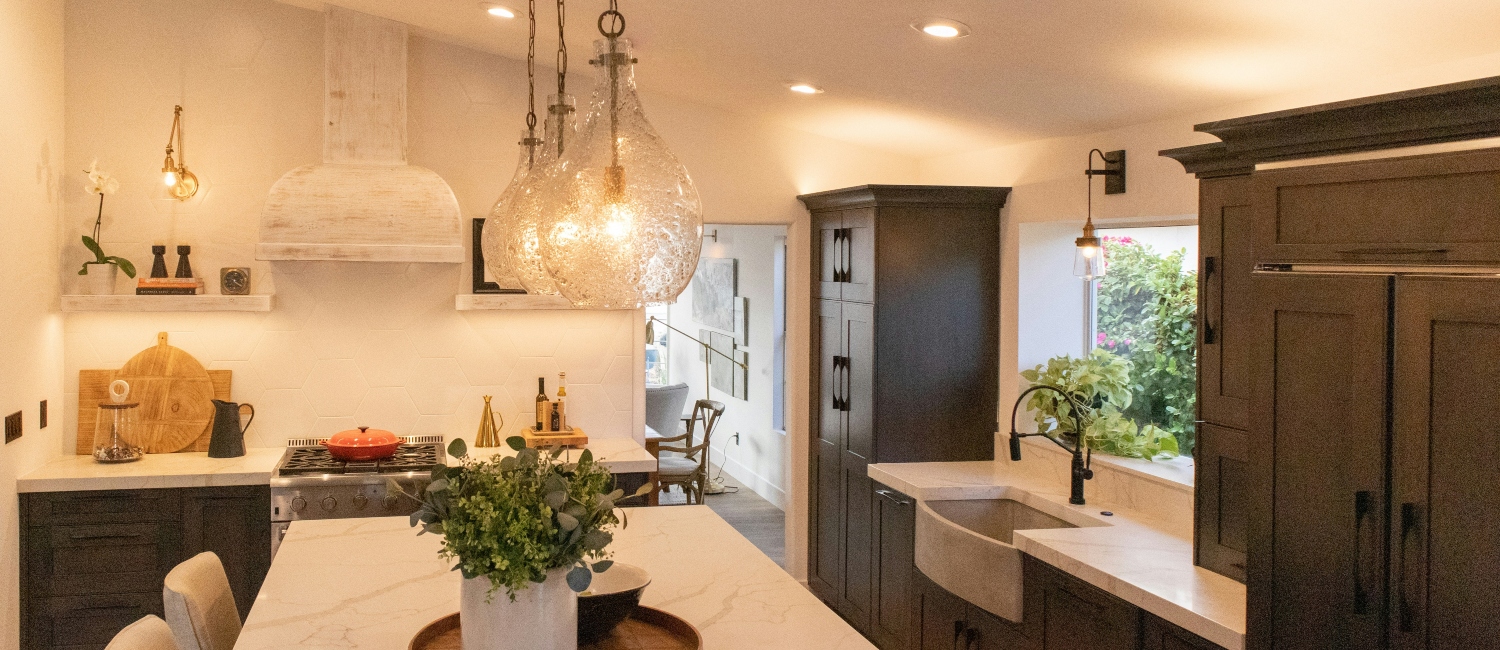Breaking away from tradition is a good thing.
In the ever-evolving world of interior design, trends and pop culture influences come and go, all leaving unique imprints on the aesthetic landscape of homes and spaces. Following the subtly modern look of midcentury modern design, the latter part of the 20th century witnessed the rise of postmodernism, a movement that revolutionized the way we approach and perceive interior spaces.
Postmodern interior design is a captivating blend of creativity, irreverence and a departure from the strict principles of previous design philosophies. In this article, we delve into postmodern design, exploring its defining features, highlights and the lively spirit that sets it apart from other styles.
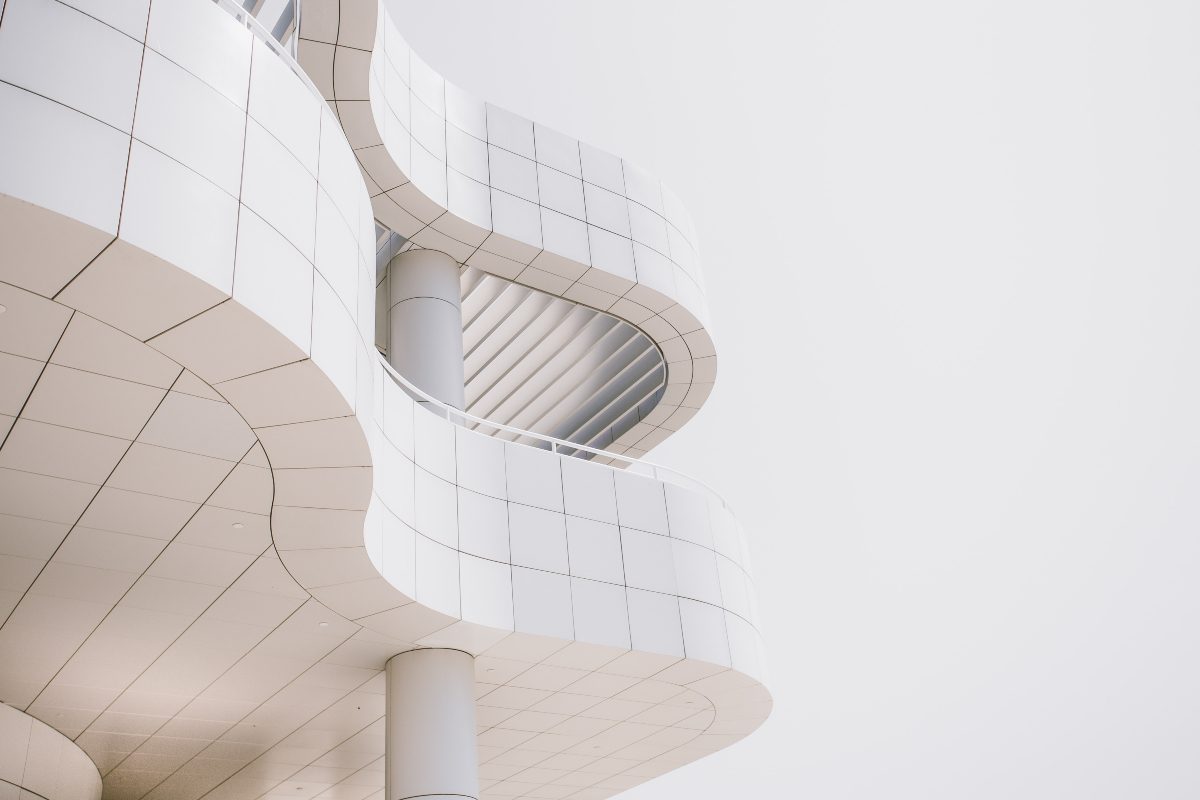
The essence of postmodern interior design
Postmodernism, in its essence, is a departure from the strict principles and uniformity of modernism. Emerging in the latter half of the 20th century, as a reaction against the perceived rigidity of modern design, postmodernism celebrates diversity, eclecticism and a playful engagement with historical design elements. In the realm of interior design, this is better translated into a departure from the clean lines and minimalism of midcentury modernism. Postmodern interiors are a celebration of contrast, embracing a mix of styles, eras and cultural influences.
Postmodern design is a rebellion against the notion that there’s a single, correct way to design spaces. It challenges the idea that form should always follow function, as popularized by the midcentury. Instead, postmodern interiors embody a sense of freedom, allowing for a rich tapestry of styles, colors, textures and influences to coexist harmoniously.
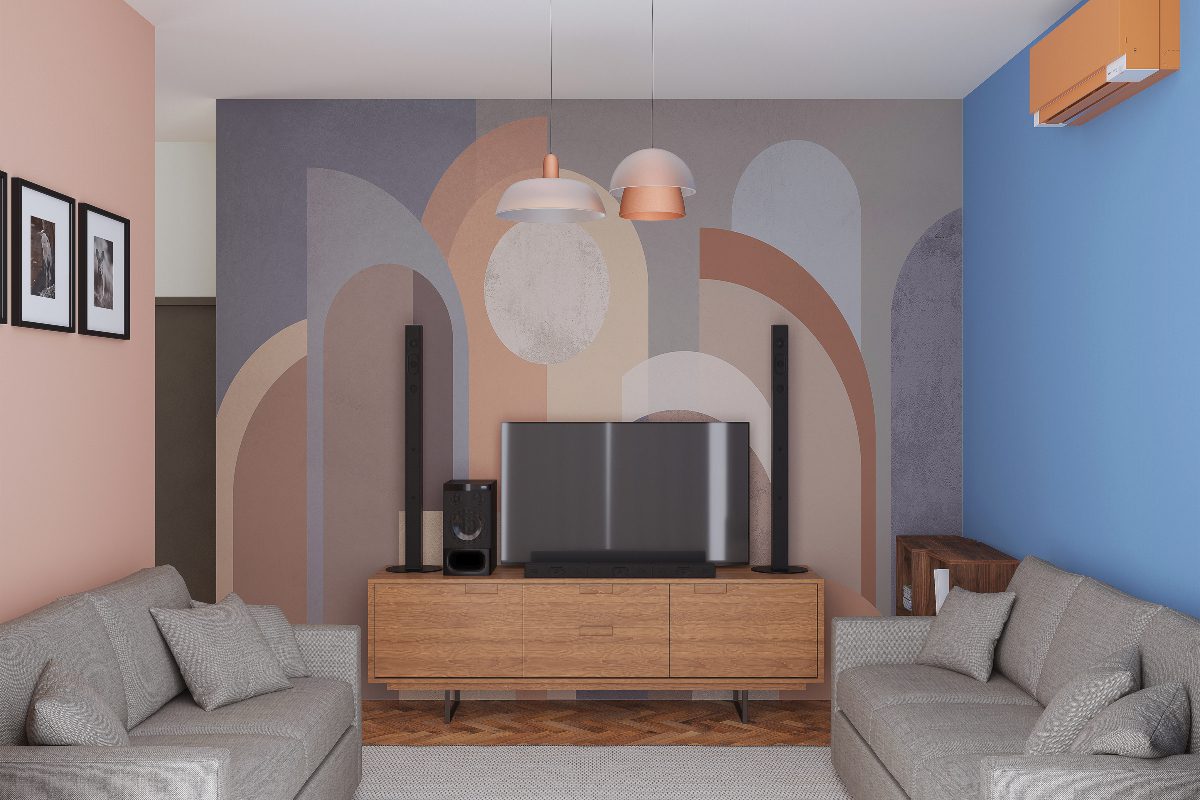
Eye-catching wallpapers and playful patterns
One of the defining features of postmodern interior design is the vibrant and bold use of wallpapers. Unlike the muted tones and subtle patterns of midcentury modern interiors, postmodern spaces often feature eye-catching, bright wallpapers that serve as a statement piece in the room. These wallpapers can range from geometric patterns to combinations of natural and retro shades, injecting a sense of playfulness and personality into the space.
The use of playful patterns extends beyond wallpapers to upholstery, curtains and even flooring. Postmodern interiors revel in mixing and matching patterns, creating a dynamic visual experience that captures attention and adds a layer of complexity to room design. This departure from the monochromatic and restrained palettes of the past is a testament to postmodernism’s embrace of eclecticism and the rejection of design norms.
The wallpaper becomes not just a background but an integral part of the design style, setting the stage for the eclectic and lively atmosphere that defines postmodern interiors. It’s a departure from the notion that walls are neutral backdrops, inviting inhabitants and visitors alike to engage with the space on a visual and emotional level.

Artistic statements
While midcentury modern design often favored neutral color palettes and understated elegance, postmodern interiors take a vibrant approach with pops of bold colors, especially in seating arrangements. Sofas, chairs and ottomans become not just functional pieces but artistic statements in themselves. The use of bold and contrasting colors adds energy and vitality to the space, creating a lively atmosphere that encourages self-expression and creativity.
In postmodern interior design, seating goes beyond comfort and functionality; it becomes a means of expressing individuality and breaking away from the conventions of the past. This departure from the subdued color schemes of previous design movements reflects the postmodern belief that design should be personal, expressive and capable of challenging established norms.
The strategic placement of colorful seating becomes a visual language, telling a story of vibrancy and breaking away from the monotonous. It signifies a shift away from subdued hues, embracing vibrant and bold opaque colors.
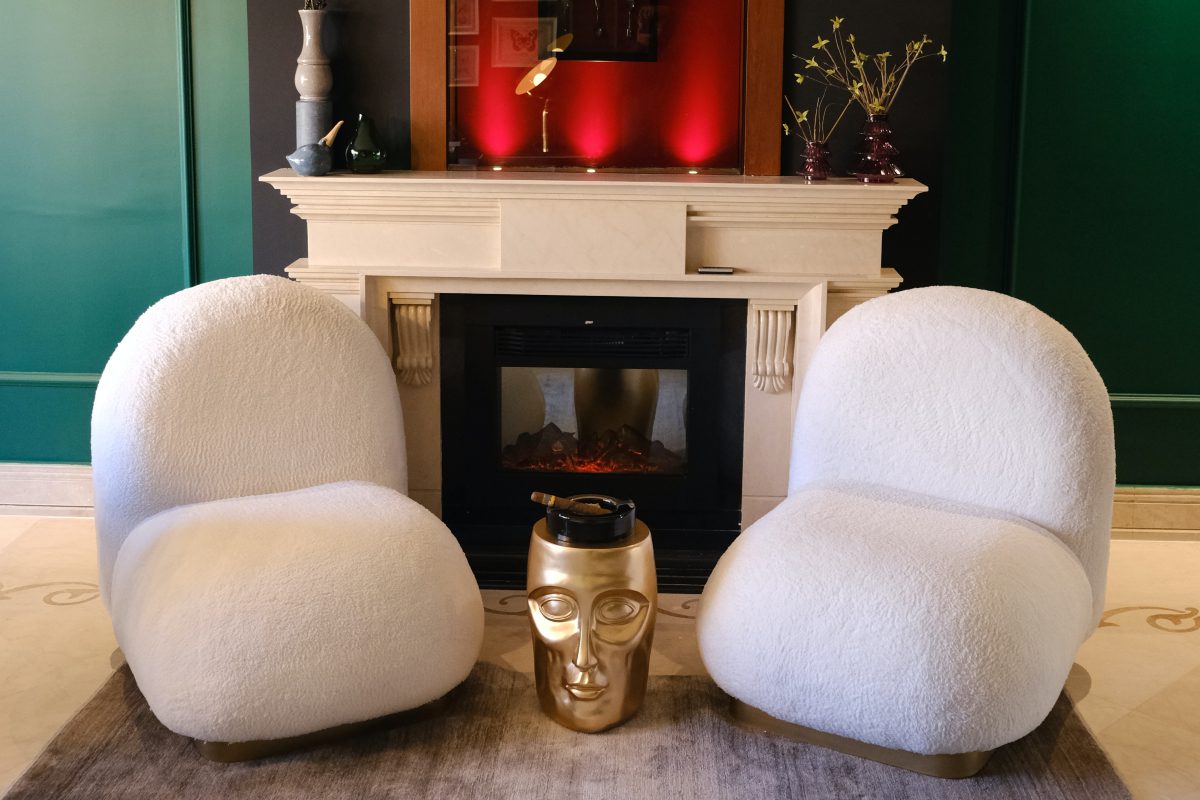
Unique takes on classic design elements
One of the most intriguing postmodern design elements is its unconventional ideas and irreverent take on classic design elements from previous centuries. Instead of adhering strictly to historical styles, postmodernism borrows elements from various periods and playfully remixes them. This approach results in spaces that feel both familiar and futuristic, creating a sense of timelessness while challenging traditional notions of design.
For instance, postmodern interiors might feature classical columns alongside modern furniture, or a Baroque-inspired mirror complimented with contemporary art. This blending of styles and eras creates a dedication to design evolution, where the past is preserved as well as reinterpreted. It is a form of design rebellion that challenges the notion of the linear progression of styles and embraces a more fluid and dynamic approach to aesthetics.
Postmodernism redefines the relationship with history, treating it as a playground rather than a rulebook. Classic elements are utilized as building blocks for a new visual design language that is both familiar and refreshing.
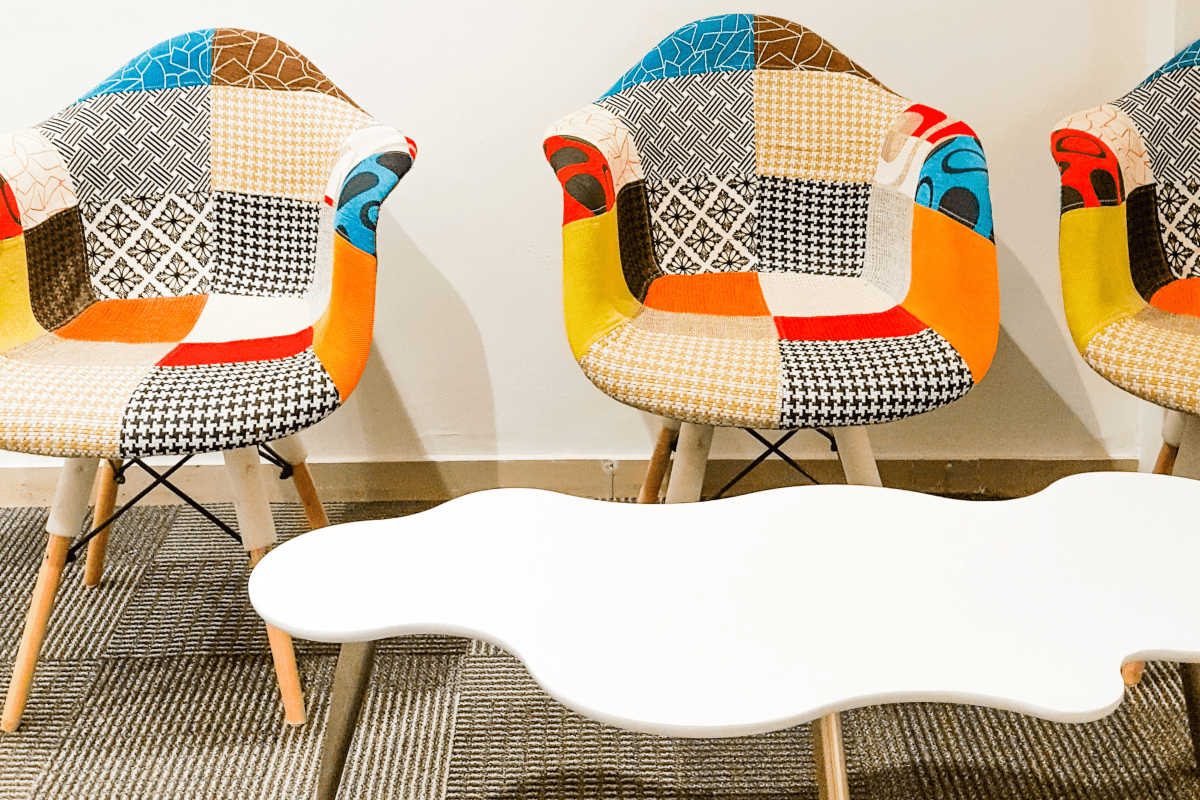
The importance of individual expression
At the heart of postmodern interior design is the celebration of individual expression. Unlike the more formulaic nature of previous design movements, postmodernism encourages designers to embrace their unique tastes and preferences. This freedom is evident in the diverse range of materials, textures and colors used in postmodern interiors.
From sleek metals and glass to warm woods and plush fabrics, postmodern spaces thrive on the combination of materials, creating a rich sensory experience. This emphasis on individual expression extends to the inclusion of personal artifacts, vintage finds and quirky accessories that add a layer of character to the space. The result is a home that reflects personality and interests, telling a story of one’s life.
Individual expression is arguably the largest guiding principle in postmodern design, inviting people to curate their spaces with elements that resonate with them personally. The eclectic mix of materials and personal artifacts creates a narrative of the inhabitants’ journey, turning the home into a canvas that tells a story.
Postmodern pioneers
Influential designers in this movement embraced eclecticism, experimentation and a playful blend of styles. Michael Graves, a celebrated architect, and designer, is renowned for his postmodern contributions, infusing everyday objects with whimsical and symbolic elements. Ettore Sottsass, the visionary behind the Memphis Group, disrupted the design landscape with vibrant colors, bold patterns and unconventional shapes. Their innovative approaches continue to inspire, shaping the contemporary design landscape with a legacy that transcends the boundaries of time and tradition.
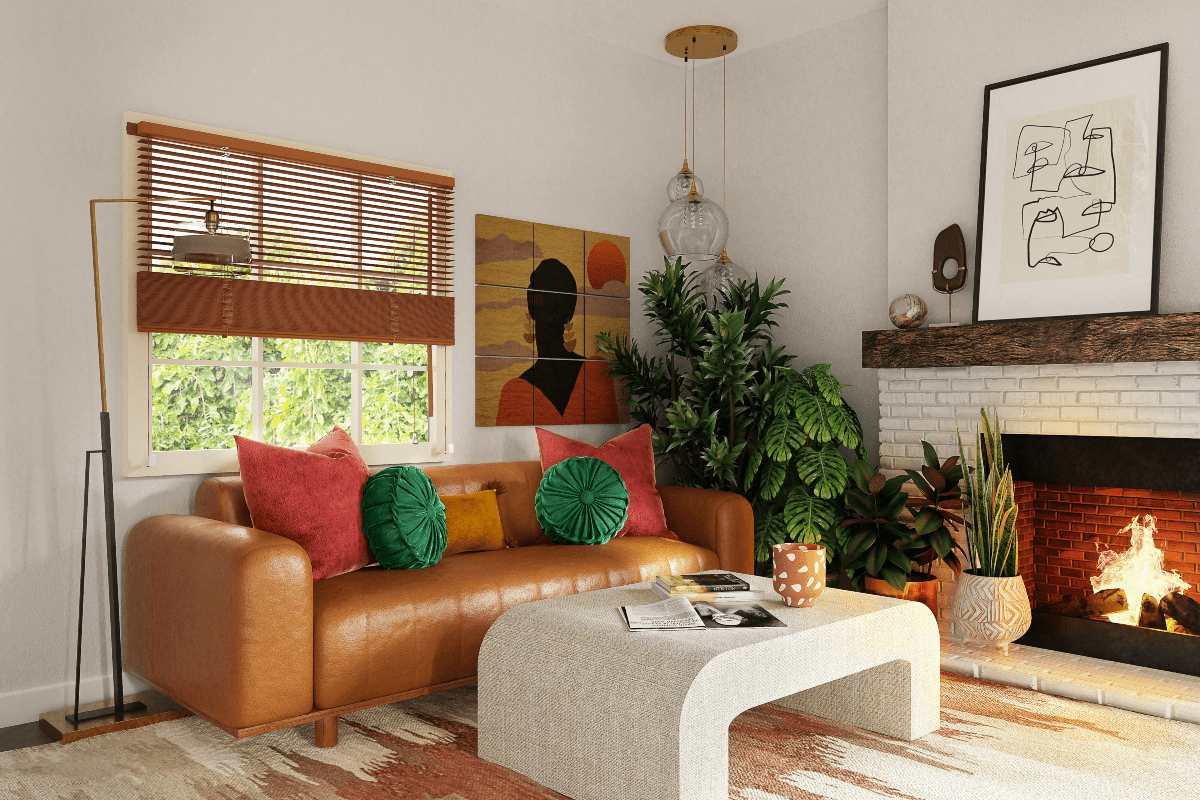
Postmodernism interior design: A celebration of individuality
In the wake of midcentury modernism, postmodern interior design emerged as a vibrant and eclectic movement that celebrated diversity, individual expression and a playful departure from design norms. With its bright wallpapers, pops of color in seating and irreverent takes on classic design elements, postmodernism transformed interiors into dynamic canvases of self-expression.
As we continue to explore and evolve in the realm of interior design, postmodernism stands as a testament to the power of creativity and the rejection of rigid design principles. It encourages us to embrace the unexpected, mix styles with confidence and create spaces that tell our unique stories. In a world where individuality is increasingly valued, postmodern interior design remains an inspiring chapter in the ongoing narrative of design evolution.
Whether you’re drawn to the bold patterns, vibrant colors or blends of styles, postmodern design invites you to break free from the ordinary and celebrate the diversity that makes each space, and each individual, truly unique. Still looking for the perfect place to style as a reflection of your personality? Find the perfect place in one of our available apartments and get decorating.

